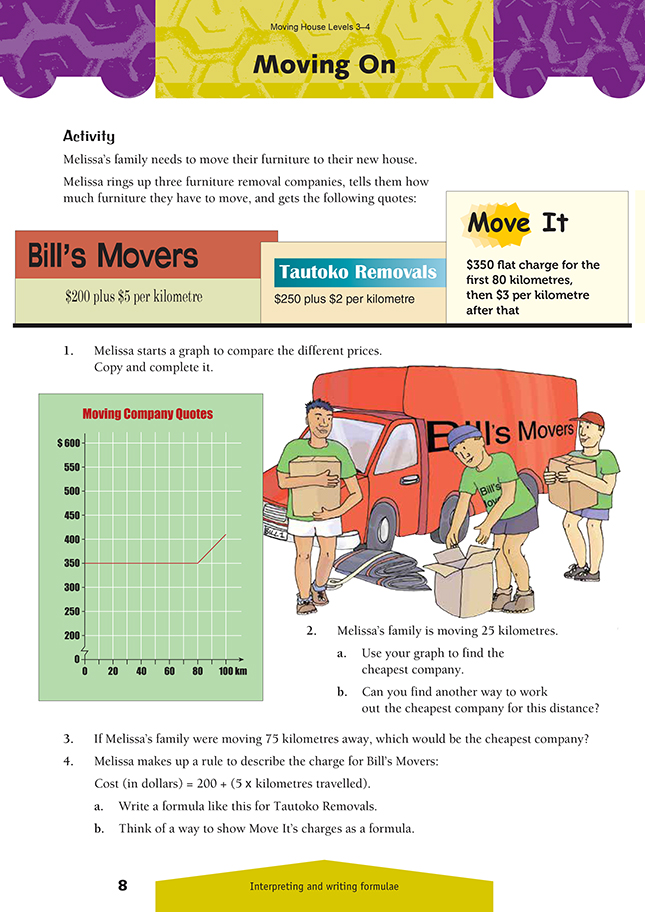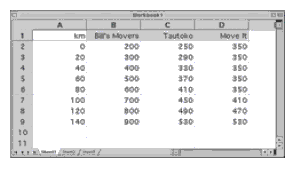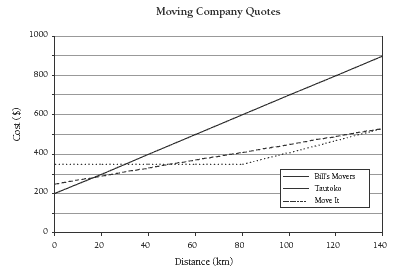This is a level 4 algebra activity from the Figure It Out theme series.
A PDF of the student activity is available.
Click on the image to enlarge it. Click again to close. Download PDF (440 KB)
use a formula to solve calculations
write a linear formula to express a linear relationship
FIO, Levels 3-4, Theme: Moving House, Moving On, page 8
This activity requires the students to graph the costs for three removal firms. Each firm has a base charge and a rate per additional kilometre. If the students haven’t had experience with linear graphs, they may need to be taught the basics of plotting points and using them to determine a line.
There is no reason why they can’t work directly onto square grid paper. However, an alternative strategy is to ask them to make a table listing each of the three firms and their base charges, and the costs for the various distances, and to plot these results on the grid.
The graph can be drawn on paper, but if the students have access to a computer, they could enter the data into a spreadsheet program and use the program’s chart-making facility. The spreadsheet would look like this:
Choose the XY (Scatter) style of graph (straight line option) from the chart menu, not the line graph, to avoid problems with the horizontal axis and its scale.
It is important that the students learn to “read” graphs for their story instead of just looking at them. What does it mean if a line is horizontal? Uphill? Downhill? What does it mean if there is a bend in the line? What does it mean if two lines run parallel to each other? If one is steeper than another? If two lines intersect? Do lines continue beyond the boundary of the graph? (Note that the students should not put arrowheads on lines to indicate that they continue beyond the edge of
their graph.)
If a table has been created as above, writing formulae for question 4 should be straightforward: cost = base charge + (number of kilometres travelled × cost per kilometre). Be aware, however, that because of the way Move It charges, two formulae are required: one for up to 80 kilometres and one for >80 kilometres. Discuss with the students the advantages of graphs compared to those of
formulae. (See the notes on Solar-powered Shower, page 27, for further discussion of this issue.)
Answers to Activity
1.
a. Tautoko Removals ($300)
b. For each of the three companies, take the base charge and add to this the additional charge per km (if any) for 25 km. The lowest result will indicate the cheapest company.
3. Move It ($350)
4. a. $250 + ($2 × km travelled)
b. km travelled <_ 80: $350
km travelled > 80: $350 + (3 × (km travelled – 80))



